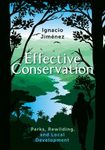By: Lary M Dilsaver(Author)
471 pages, 38 plates with colour & b/w photos, 8 plates with colour maps; 64 b/w photos, 1 b/w illustration
![Preserving the Desert Preserving the Desert]()
Click to have a closer look
About this book
Customer reviews
Biography
Related titles
About this book
National parks are different from other federal lands in the United States. Beginning in 1872 with the establishment of Yellowstone, they were largely set aside to preserve for future generations the most spectacular and inspirational features of the country, seeking the best representative examples of major ecosystems such as Yosemite, geologic forms such as the Grand Canyon, archaeological sites such as Mesa Verde, and scenes of human events such as Gettysburg. But one type of habitat – the desert – fell short of that goal in American eyes until travel writers and the Automobile Age began to change that perception.
As the Park Service began to explore the better-known Mojave and Colorado deserts of southern California during the 1920s for a possible desert park, many agency leaders still carried the same negative image of arid lands shared by many Americans – that they are hostile and largely useless. But one wealthy woman – Minerva Hamilton Hoyt, from Pasadena – came forward, believing in the value of the desert, and convinced President Franklin D. Roosevelt to establish a national monument that would protect the unique and iconic Joshua trees and other desert flora and fauna. Thus was Joshua Tree National Monument officially established in 1936, with the area later expanded in 1994 when it became Joshua Tree National Park.
Since 1936, the National Park Service and a growing cadre of environmentalists and recreationalists have fought to block ongoing proposals from miners, ranchers, private landowners, and real estate developers who historically have refused to accept the idea that any desert is suitable for anything other than their consumptive activities. To their dismay, Joshua Tree National Park, even with its often-conflicting land uses, is more popular today than ever, serving more than one million visitors per year who find the desert to be a place worthy of respect and preservation.
Customer Reviews
Biography
Lary M. Dilsaver is Professor Emeritus of Historical Geography at the University of South Alabama and a thirty-year volunteer researcher for the National Park Service. He has written more than forty articles and book chapters on national parks and historic landscapes, and he has authored or edited six books, including America's National Park System: The Critical Documents and Cumberland Island National Seashore: A History of Conservation Conflict.
By: Lary M Dilsaver(Author)
471 pages, 38 plates with colour & b/w photos, 8 plates with colour maps; 64 b/w photos, 1 b/w illustration
"After years of conducting meticulous research, Lary Dilsaver has successfully assembled the authoritative account of the storied and complex history of Joshua Tree National Park. Like other national-park-based conservation efforts in the California Desert, Joshua Tree's story is filled with challenges and conflicts. He has traced the park's tumultuous past from its establishment as a National Monument in 1936, through the removal of more than 265,000 acres from the national monument during the 1950s, to its designation and administration as a national park in 1994, and beyond. Preserving the Desert is a must read for all who love our national parks, enjoy the California desert, and would like to see these lands preserved in perpetuity!"
– Mark Butler, Retired Superintendent, Joshua Tree National Park
"This outstanding book will serve as the definitive historical geography and management history of Joshua Tree National Park. Joshua Tree is one of the nation's most visited yet threatened parks, and it offered author Lary Dilsaver an opportunity to explore the area's evolution from an unwanted wasteland to an environmentally vulnerable and amenity-rich sanctuary. The fascinating story he tells also reveals how Joshua Tree is not only a window into the larger evolution of Southern California, but an outstanding example of how a blossoming affinity for an arid-lands aesthetic transformed a place once seen as devoid of beauty or utility into one of the nation's premier desert playgrounds and preserves."
– William Wyckoff, Professor of Geography, Montana State University, and author of How to Read the American West: A Field Guide and Creating Colorado: The Making of a Western American Landscape, 1860–1940





























